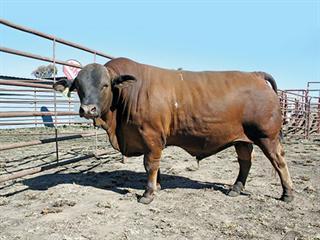While the international food commodity prices recently saw an annual increase of 50%, the world price for raw sugar increased by a modest 23% and refined sugar by only 9%. According to the SA Sugar Association (SASA), this has created significant challenges for the country’s sugarcane growing and milling sectors in terms of meeting escalating input costs.
Speaking at SASA’s recent 2008 annual general meeting in Mount Edgecombe, KwaZulu-Natal, chairperson Rodger Stewart said that in line with global prices, the local annual retail price increases to April 2008, as measured by Statistics SA, were 26% for white bread, 52% for cake flour, 17% for mealie meal, 13% for rice and 103% for cooking oil. “In contrast, the [local] white sugar price has increased by 4%,” he said. Stewart added that the recent price challenges for the SA sugar industry had been exacerbated by a below-average national sugarcane crop during the 2007/08 season. While the country’s sugar production increased by 50 000t year-on-year due to improved sugarcane quality, production decreased by 3%, or 500 000t, to less than 20 million tons for the past local milling season.
“On the financial front, the strong rand and moderate world prices placed the domestic sugar market under pressure from imported sugar, hence domestic sugar prices have continued to decline in real terms,” Stewart said. “In addition, the increased costs of agricultural and milling inputs have resulted in a cost price squeeze as the industry’s turnover increased by only 2% year-on-year.” Stewart said that the good economic growth in SA in recent years had led to the substantial growth of sugar sales in the domestic market, but that the benefits of this had been blighted by increased sugar imports that continue to harm the industry.
In terms of SASA’s actions to manage the industry’s business environment, Stewart pointed out that they were continuing to provide technical support to government negotiators who were pressing for trade liberalisation, in keeping with the development objectives of the Doha Round. “Until international trade for agriculture, and in particular sugar, is deregulated, the SA sugar industry is supported by government-approved regulatory interventions to enable the industry to compete internationally,” he explained.
“These are in the form of an appropriate Sugar Act, reasonable tariff protection, the optimisation of international trade arrangements and a development-orientated regional strategy for the Southern African Development Community’s sugar industries.” SASA added that its application for an upward adjustment to the US dollar-based reference price for sugar had been submitted to the International Trade Administration Commission (ITAC) in January this year and was still under consideration.
The association also expressed concern about the lack of protection offered to the local sugar industry, which was evident in the surge in sugar imports into the country. It added that, given the current level of food price increases, ITAC might be hesitant to increase any foodstuff tariffs. “However, consideration should be given to responsible local sugar pricing under the US dollar-based reference price system,” Stewart said. “This should give ITAC the assurance that a reasonable request for tariff protection for sugar is appropriate for a product that can’t rely on international trade for a fair and sustainable level of local pricing.” – Lloyd Phillips
Sugar industry transformation hampered by lacklustre land reform
The SA Sugar Association (SASA) SAID the sugar industry, which is a leader in agricultural land reform, continues to grapple with the slow pace at which land claims are being dealt with by government. It said this has slowed down the industry’s transformation efforts. “The local sugar industry has long recognised the need to promote diverse ownership of agricultural land under sugarcane and has a range of support instruments in place to promote sustainable land reform,” said SASA chairperson Rodger Stewart.
“Evidence of these efforts is that freehold land growing sugarcane under black ownership has increased from 5% in 1994 to the current 17%, largely in terms of the willing buyer, willing seller principle. If land under sugarcane on communally owned tribal areas is added to this figure, 29,5% of all land under sugarcane is already black-owned or controlled.”
Stewart said the slow process of the restitution of land claims was injecting a great deal of uncertainty into the production decisions of affected landowners in the sugar industry. recent survey showed that of the 54% of the industry’s freehold land that has been gazetted for land claims, only 7% had been settled so far. In addition, a further 1 000 land claims of unknown extent were in the process of being gazetted.
“This leaves 47% of the sugar industry’s freehold land that has been gazetted, and that is still to be gazetted, under a cloud of uncertainty as to future ownership,” Stewart explained. The land claims settlement processes needs to be expedited by substantially increasing government’s well-trained administrative staff. association also said that conflicting land claims needed to be addressed promptly and effectively.
The sugar industry was concerned about government statements that probably half of all settled land claims to date had led to failed agricultural production by the new landowners. Stewart pointed out that if this figure was projected onto the more than 50% of sugarcane lands under land claims, it would mean failed agricultural production had decreased sugar mill throughput in the country by more than 25%, rendering the sugar milling sector unprofitable. – Lloyd Phillips









